You can search and browse the collection in the State of Massachusetts’ DSpace online repository here.
You’re going to want to make some time in your schedule this week to explore these new genealogy records that just might help you discover a new branch of your family tree! This week we highlight a wide variety of intriguing records including historical maps, oral histories, workhouse records, and historical newspapers. (Disclosure: This article contains affiliate links and Genealogy Gems will be compensated if you make a purchase after clicking on these links (at no additional cost to you). Thank you for helping us bring these free articles to you!)
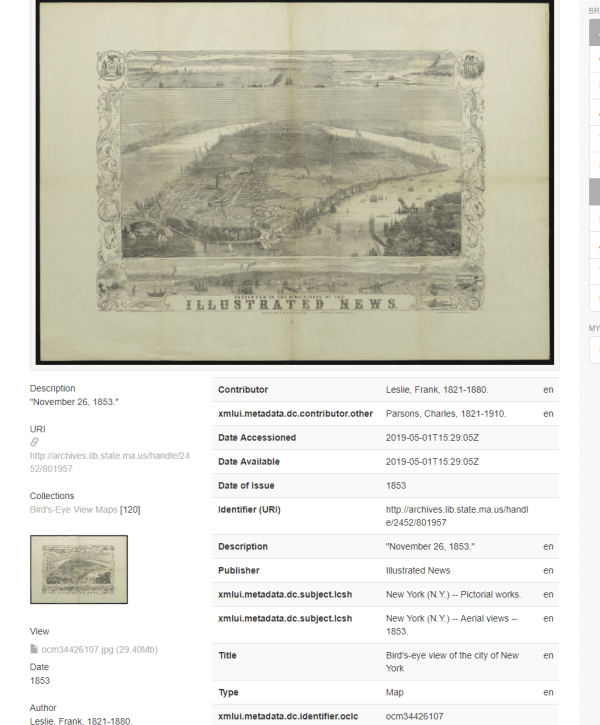
You can search and browse the collection in the State of Massachusetts’ DSpace online repository here.
World War II ended in 1945 making a man who enlisted at the age of 18 that year, 92 years old today. A new digital archive at Bowling Green State University is striving to digitize old cassette tapes and video tapes that contain interviews with over 100 veterans from Ohio.
According to the website, the exhibit “provides full digital access to the History 303 World War II oral histories (MS-0871). The oral histories were collected from 2000-2004 for a “History of World War II” (History 303) course taught by Drs. Walter E. Grunden and Kathren Brown in the BGSU Department of History, who assigned students the project of recording an interview with an individual who directly experienced the war, whether as a military veteran, Holocaust survivor, refugee, or non-combatant on the home front.”

BGSU’s World War II veteran oral histories include both men and women. who served.
The project is part of a $6,700 grant the university received from the Ohio History Connection. A helpful finding aid is available for the collection here at the BGSU website.
You can search and view the interview here. If you’re like me, you’ll find these interviews with many of the Greatest Generation compelling to watch even if you don’t have relatives from Ohio.
Findmypast has added over 400,000 Donegal, Ireland records to their growing collection of Irish Workhouse records.
The Donegal Workhouses Registers and Minute Books have been digitized and published online for the first time by Findmypast in partnership with the Donegal County Council.
The records consist of both transcripts and images of original admission and discharge registers as well as board of guardians’ minute books spanning the years 1840 to 1922.
The collection covers the unions of:
As well as registers and minute books, users can also expect to find:
From Findmypast: “High levels of poverty in 19th century Ireland meant that hundreds of thousands of Irish people passed through the workhouses. Irish workhouses were generally built to accommodate around 800 inmates although it soon became clear that more space was needed and programme of building took place throughout the 1840s and 50s.
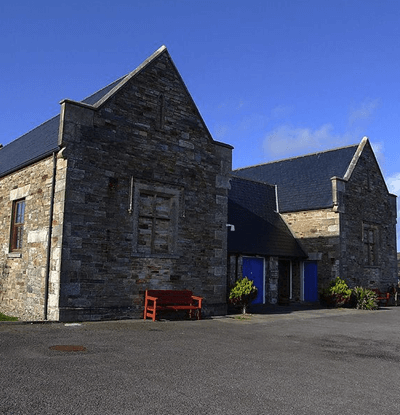
Former workhousein Dunfanaghy, Donegal Flickr user nz_willowherb [CC BY 2.0 (https://creativecommons.org/licenses/by/2.0)]
Life inside was grim. At first, there was no so-called outdoor relief, as would have been common in England. Outdoor relief was when the poor could simply use the workhouse facilities as needed by undertaking a day’s work. Indoor relief was initially the only option and required the poor to prove they were destitute before they were admitted.”
This new collection is part of an existing archive of Irish Workhouse records which now includes over 3.1 million records covering Dublin, Clare, Sligo and Waterford.
Findmypast has added 137,896 new pages to The Archive. These have been added to 18 existing publications spanning 128 years from 1871 to 1999.
The historical newspapers with new additions include:
Search these new records and images by clicking on the collection links below. The number shown in parenthesis is the number of indexed records added.
Australia: Australia, South Australia, Prison Records, 1838-1912 (81,971) New indexed records collection
Belgium: Belgium, Namur, Civil Registration, 1800-1912 (402) Added indexed records to existing collection
Canada: Nova Scotia Births, 1864-1877 (183,455) Added indexed records to an existing collection
Canada: Nova Scotia Marriages, 1864-1918 (18,885) Added indexed records to an existing collection
England: England, Herefordshire Bishop’s Transcripts, 1583-1898 (594,707) New indexed records collection
Germany: Germany, Saxony-Anhalt, Halberstadt, Civil Registration, 1874-1982 (12,060) Added indexed records to an existing collection
Lesotho: Lesotho, Evangelical Church Records, 1828-2005 (302) Added indexed records to an existing collection
Liberia: Liberia, Marriage Records, 1912-2015 (2,475) Added indexed records to an existing collection
Luxembourg: Luxembourg, Civil Registration, 1796-1941 (73,901) Added indexed records to an existing collection
Peru: Peru, Cemetery Records, 1912-2013 (42,164) New indexed records collection
Scotland: Scotland Presbyterian & Protestant Church Records, 1736-1990 (109,064) New indexed records collection
United States: Arkansas Confederate Pensions, 1901-1929 (33,779) Added indexed records to an existing collection
United States: Arkansas, Church Records, 1922-1977 (306) New indexed records collection
United States: California, Church Records, 1864-1985 1,941 New indexed records collection
United States: California, Santa Clara County, San Jose, Oak Hill Cemetery Headstone Inscriptions, 1838-1985 (61,966) New indexed record collection
United States: Colorado, Church Records, 1692-1942 (35,030) New indexed records collection
United States: Connecticut, Vital Records, Prior to 1850 (8) Added indexed records to existing collection
United States: Massachusetts, City of Boston Voter Registers, 1857-1920 (32,996) New indexed records collection
United States: Michigan, Civil War Centennial Observance Commission, Committee on Civil War Grave Registration, Burial Records (15,951) New indexed records collection
United States: Minnesota, County Deaths, 1850-2001 (8,672) Added indexed records to an existing collection
United States: Nebraska, Box Butte County, Funeral Home Records, 1919-1976 (3,491) Added indexed records to an existing collection
United States: Nebraska, Church Records, 1875-1899 (151) New indexed records collection
United States: Pennsylvania, Berks County, Reading, Charles Evans Cemetery and Crematory Burial Records, 1887-1979 (106,043) New indexed records collection
United States: Texas, Bexar County, San Antonio Cemetery Records, 1893-2007 (4,981) Added indexed records to an existing collection
United States: United States Deceased Physician File (AMA), 1864-1968 (78,215) Added indexed records to an existing collection
Did you find an ancestor or bust a brick wall using our list of new online genealogical records? Please leave a comment below and share your story and inspire others. And while you’re at it, please share this article using our social buttons (at the top of this article) with your genealogy friends. We thank you, and they will too!

Have you used WPA records for genealogy? Their Historical Record Surveys and local and oral histories may help you in your family history research. Existing records and locations vary widely. Here are tips to help you in your search.
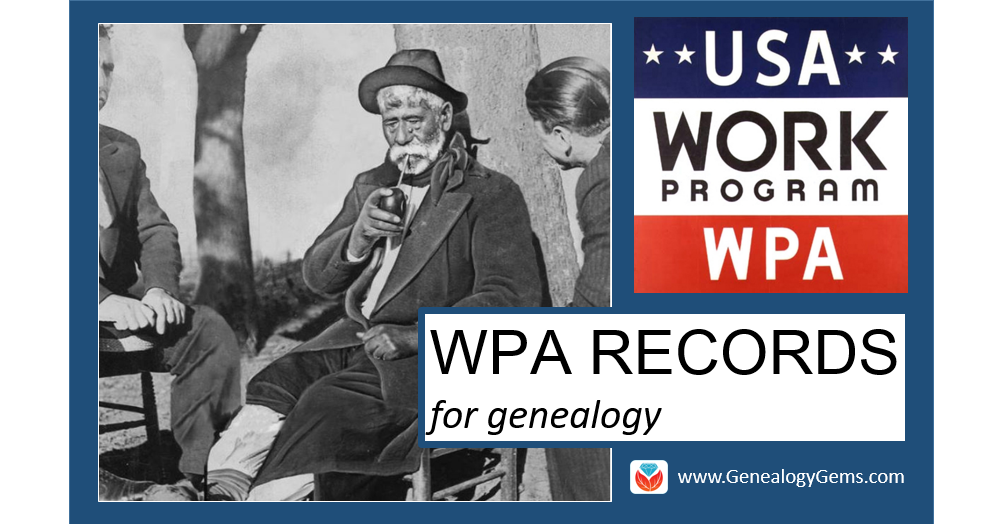
In the late 1930s and early 1940s, employees of the Works Progress Administration (WPA, also known as the Works Projects Administration) created new resources for U.S. genealogical research. It’s possible you’ve even consulted some of these without being aware of their WPA origins. After all, the projects and their formats varied. They didn’t always prominently credit the WPA and some were printed long afterward. We’re going to shine the spotlight on WPA-era local histories, oral histories and statewide Historical Record Surveys.
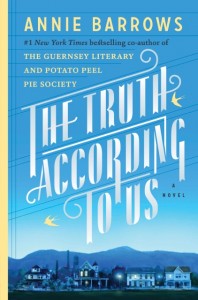 In Annie Barrows’ novel The Truth According to Us, Layla Beck heads to the small fictional town of Macedonia, West Virginia to write a local history as a WPA assignment. Drama ensues, both in Layla’s personal life and as she tries to learn local stories, which everyone reports a little differently. (We featured this book in the Genealogy Gems Book Club.)
In Annie Barrows’ novel The Truth According to Us, Layla Beck heads to the small fictional town of Macedonia, West Virginia to write a local history as a WPA assignment. Drama ensues, both in Layla’s personal life and as she tries to learn local stories, which everyone reports a little differently. (We featured this book in the Genealogy Gems Book Club.)
Actually, local histories were written as WPA projects. Their scope, topics, and formats varied, depending on the unique background and resources of each region and how active WPA workers were in each state and county. For example, WPA historical materials in Morrison County, Minnesota include “histories on townships, cities, churches, schools, businesses, the military, and miscellaneous county history topics,” which have since been collected and reprinted by the county historical society. Many historical projects included photographs, such as this one for the city of New Orleans.
WPA workers also captured oral histories of individuals, too. Many were collected in American Life Histories: Manuscripts from the Federal Writers’ Project, 1936 to 1940, now online at the Library of Congress. According to the collection description, “The documents chronicle vivid life stories of Americans who lived at the turn of the century and include tales of meeting Billy the Kid, surviving the 1871 Chicago fire, pioneer journeys out West, factory work, and the immigrant experience. The documents often describe the informant’s physical appearance, family, education, income, occupation, political views, religion and mores.”
Other important WPA oral histories are narratives of former slaves and their families. You can browse an enormous collection of these online at the Library of Congress. These aren’t the ideal eyewitness accounts we wish for, as they were gathered so long after the end of slavery, from many who were young children at the time. Also, many researchers believe interviewees may not have spoken candidly, especially to white interviewers who may have known them personally.
It’s a long shot to find an ancestor mentioned by name in WPA oral histories. In some instances, pseudonyms were even used for names and places. But, you can still learn a lot from others’ descriptions of daily life and unusual events your ancestors may have experienced.
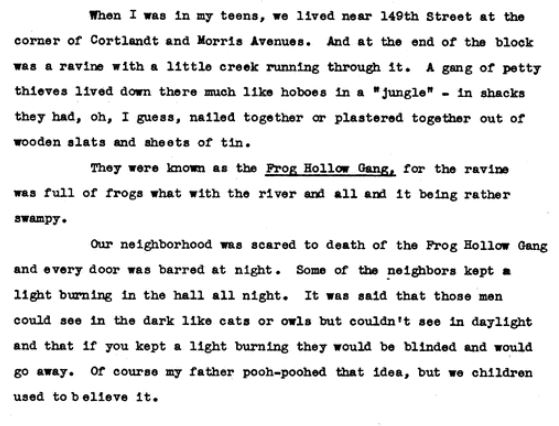
From one of the slave narratives mentioned in this article.
The Historical Record Surveys created by the WPA are among the most genealogically-valuable of their projects. “Under the auspices of the WPA, workers went to archives, historical societies, public and university libraries, and compiled inventories of manuscript collections,” writes Bryan Mulcahy in an online report. “They went to courthouses, town halls, offices in large cities, and vital statistics offices and inventoried records. Besides compiling indexes, they also transcribed some of the records they found.”
Today, many of their efforts still exist. They include indexes to cemeteries, newspapers, and naturalization records, as well as inventories of courthouse records, church records, and other manuscript collections in various archives or libraries. Of course, some records may have been moved or destroyed since inventories were created, but knowing what records existed around 1940 and what they were called may help you locate surviving collections. Some indexes, such as those of cemetery tombstone inscriptions, may actually be more valuable since they captured information from tombstones that may no longer exist or be legible.
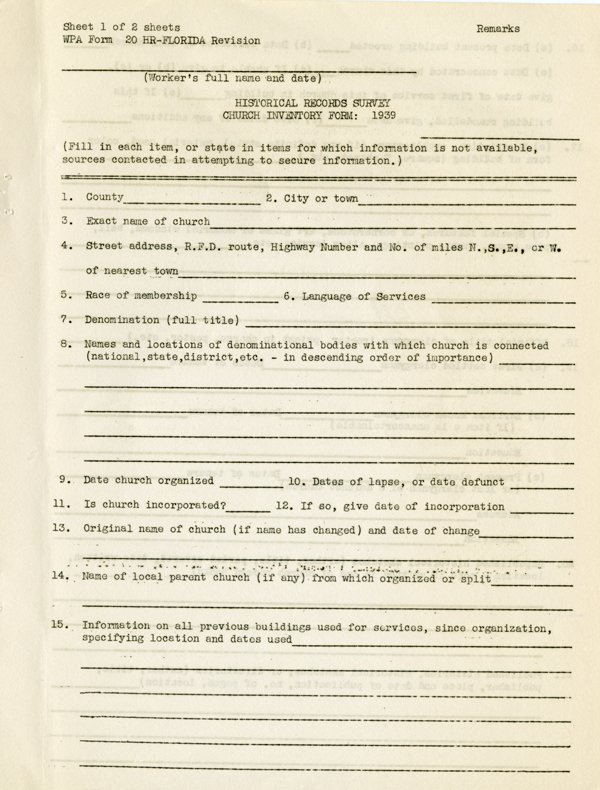
A blank WPA Historical Records Survey church records inventory form. Image courtesy of the State Archives of Florida. Click this image to find it online at Florida Memory.
One great example is the Historical Records Survey for the state of Oregon, described as “the most comprehensive documentary project of Oregon history and related records of its time.” It includes historical essays, document transcriptions, interviews, research notes, photographs, pamphlets and more. According to its collection description, “The territorial and pioneer periods of the mid-to-late nineteenth century receive the greatest attention, with an emphasis on the growth of state government and infrastructure, business and agriculture, transportation, education, biography, and relations between social groups. Native Americans figure prominently in this collection.”
Some WPA projects were carried out on a federal level and others by state agencies. They were never centrally published or collected. Today, surviving original files and published volumes are scattered across the country. Some can be found in the National Archives, many in state libraries or societies, and many more available at local repositories.
A Google search such as historical records surveys and the name of the state and/or county is a great way to start your search for WPA records for genealogy research. Some results will lead right to the kinds of resources you want, such as this guide to WPA records in archives in the Pacific Northwest. Others, such as this one for the Iowa Historical Records Survey published in The American Archivist, are mostly a history of the effort. However, they do contain several useful bibliographic citations to records that were created. Add the name of the county to your search and you may find more targeted results, such as this library catalog entry for the inventory of the Jasper County archives. Click here to learn more about Google searches for genealogy records you want to find.
Remember, though, that many WPA publications and collections aren’t identified as such. Don’t fixate on needing to find WPA listed in the title. Just concentrate your efforts on finding the local and oral histories, photos, historical record indexes and inventories, and other resources that may be out there. When you find one created during the Great Depression, you’ll know it may have been done by the WPA.
 Love what you’re reading and want to learn more? Go deeper into genealogy “gems” like these in Lisa Louise Cooke’s Genealogy Gems Podcasts. Lisa produces a free internationally-renowned monthly podcast that’s had over 2.5 million downloads! Additionally, Genealogy Gems Premium website members also have access to her full archive of monthly Premium podcast epidodes: check out a full description of these here including Episode 2 on WPA records for genealogy.
Love what you’re reading and want to learn more? Go deeper into genealogy “gems” like these in Lisa Louise Cooke’s Genealogy Gems Podcasts. Lisa produces a free internationally-renowned monthly podcast that’s had over 2.5 million downloads! Additionally, Genealogy Gems Premium website members also have access to her full archive of monthly Premium podcast epidodes: check out a full description of these here including Episode 2 on WPA records for genealogy.
with Lisa Louise Cooke
May 2019
Listen now, click player below:
In this episode:
NEWS:
Lisa Louise Cooke is back in the studio after two weeks on the road speaking at the Ohio Genealogical Society (OGS) Conference and the National Genealogical Society (NGS) Conference.
Each conference was great and had its own unique feel, and there were many new genealogists in attendance.
Genealogy Gems listener Carol stopped by and enthusiastically shared with how the eBay search strategies for family history that Lisa discussed in episode 140 paid off in a big way!


MAILBOX:

Robin wrote in to share how Sydney Orton’s song with her grandpa in Genealogy Gems Podcast episode 228 brought her to tears in a toll plaza while driving!
Steve wrote in to rave about the value that his new Genealogy Gems Premium eLearning membership has brought to his family history research.
Rylee says she’s grateful to have found the podcast and she shares a story of genealogical discovery that she hopes will inspire others. Rylee asks “How do I find sources for these people? I have searched all over ancestry and Family Search and have had no luck again. I really want to believe that the people I have as Adam’s parents and siblings all the way through his 2nd great-grandparents (paternal) are truly his family but I need to get more information. Where can I go for help with German records and where can I continue my search?”
Lisa’s comments: You’re absolutely right, what you found are just hints. It sounds like it’s time for you to move on from the “Genealogy Giants” (Ancestry, FamilySearch, etc.) and into German records websites, libraries, and archives to find real sources that nail down the family tree.
Lisa recommends the Genealogy Giants quick reference comparison guide.
We have several articles and episodes at Genealogy Gems that can help you do this:
I’m optimistic for you because Germans are known for keeping excellent records, and I have had good luck in searching them.
GEM: Your Master Family Tree, and Sharing Branches Online Explained

I describe it this way: Plant your tree in your own backyard and share branches online.
A master family tree has three important characteristics:
Plant Your Master Family Tree
Lisa uses RootsMagic software for her master family tree. Learn more about GEDCOM files in this article: GEDCOM File (What is It & How to Use This Genealogy File)
Protech Your Master Family Tree
Lisa uses Backblaze to back up her master family tree and computer. Visit www.backblaze.com/lisa
(Using this link also helps keep this free podcast free. Thank you!)
Read more: How to Download Backblaze in 4 Easy Steps
Share Branches Online
Genealogy Giants Guide available in the Genealogy Gems store.

Read Lisa’s article: Planting Your Master Genealogy Family Tree for all of the strategies mentioned in this episode.
The free podcast is sponsored by:
PROFILE AMERICA: Friday, May 24th, 2019
In a way, today marks the 175th birthday of the World Wide Web. Only it was electro-mechanical, not digital. On this date in 1844, Samuel F.B. Morse activated the first telegraph line, sending a dots-and-dashes code message from the U.S. Capitol building to a receiver in Baltimore.
By the late 1850s, the first telegraph cable had been laid across the Atlantic Ocean, and in 1861, the telegraph spanned the continental United States. Over the ensuing decades, the wires wrapped around the world.
From the 1844 demonstration, telecommunications today has grown into a half-trillion dollar a year industry, and employs more than 1 million workers in over 59,000 industry establishments.
You can find more facts about America from the U.S. Census Bureau online at www.census.gov.
Sources:
Joseph Nathan Kane, Kane’s Famous First Facts, Fifth Edition, H.W. Wilson Co., New York, NY, 1997, #7692.
Become a Genealogy Gems Premium eLearning Member
Gain access to the complete Premium Podcast archive of over 150 episodes and more than 50 video webinars, including Lisa Louise Cooke’s newest video The Big Picture in Little Details.
Learn more here.
(Membership doesn’t auto-renew because we don’t like that either. Prior to your membership expiring you’ll receive a friendly reminder email from us.)
Genealogy Gems App Users
Don’t miss the bonus content in this episode. Tap the “gift” icon on the episode screen in the app.
Get the app here or search for “Genealogy Gems” in your device’s app store.
Download the Show Notes PDF in the Genealogy Gems Podcast app.
A local genealogist used these strategies to help identify old photos taken on holiday in England by an Australian family. Read more about her savvy tips below and view the free video on using Google image search by Lisa Louise Cooke.
Sandra Stocks can’t resist solving genealogical mysteries–her own, or someone else’s. So when she saw an article in the Huddersfield Daily Examiner of West Yorkshire titled, “Can you solve the mystery of these old photographs?” she had to answer.
The photos in the article belonged to an Australian family. They included a series of images taken in the 1930s while the party was on holiday along the Great British coast. A partly-legible name and address on a picture postcard in the group provided a clue.
A few of the article’s readers responded with assistance. One of these readers was Sandra, who volunteers with the Kirkheaton Family History Group. Her answer was featured in a follow-up article (“Mystery SOLVED!”). We reached out to Sandra ourselves, to see if she would share the research strategies she used to identify these old photos. Very generously, she did!
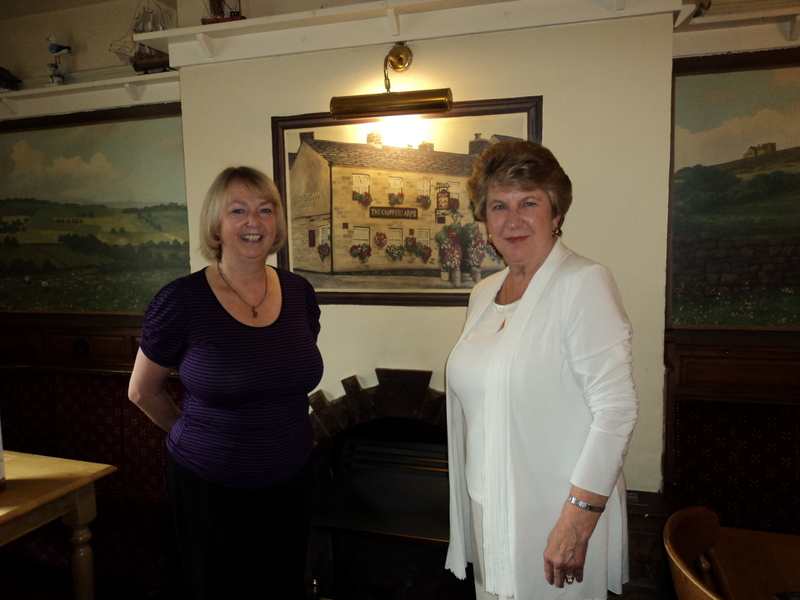
Sandra Stocks, left, with Ann from Canada. Their grandfathers were cousins; they met via Ancestry.com and Ann visited England. They met up at The Croppers Arms pub, where a mutual ancestor was a 19th-century landlord. Photo courtesy of Sandra Stocks.
Genealogy Gems Premium website members can listen to her full answer in the Genealogy Gems Premium Episode 143. In the meantime, here’s a helpful summary for everyone:
1. Look closely at the photo for any identifying names or words. Sandra begins by saying, “Although the name on the postcard looked like Mr. J. Stogley, when I looked on the newspaper’s website there were other photographs, one which showed the name P. Hogley, Druggist, above a shop window.” (Don’t see anything? Skip to step 4, below.)
2. Use any names or places you identify to consult historical records for that place and time. Sandra continues, “I then searched on Ancestry.co.uk for Joseph Hogley, which, being an unusual name, was easy to find…In the 1911 English census he was living with his wife at the address on the postcard, so I knew I had the right chap. I then searched for him in [an] earlier census and found his family, and his brother Percy Hogley, a druggist, the writer of the postcard.”
3. Follow up in other historical records to identify additional relatives–and possible subjects in the photos. Sandra most often consults birth, marriage, and death records on Ancestry.co.uk and Findmypast.co.uk. “Not everybody wants to pay for a subscription,” she acknowledges, so she also recommends FreeBMD.org.uk “which allows you to search births, marriages, and deaths in England and Wales. A quick search of births for Hogley between 1850 and 1932 would have given me the births of Joseph and Percy Hogley in Huddersfield in 1875 and 1877, respectively. I used FreeBMD to discover that Joseph and his wife had a son, Bernard Thomas Hogley, in 1913 and Bernard married in 1945.”
4. If the photos have no identifying names or places, go straight to those who might recognize them: the locals. Lastly, Sandra shares, “There is a great family history forum where I could have posted a photograph and within a very short time somebody would have told me an approximate year when the picture was taken. The website is RootsChat.com and they also have pages for each English and Welsh county where local people are more than happy to help with genealogy queries.”
Unidentified old photos exist in nearly everyone’s family history holdings. Pull those old photos out and discover what else you can discern using these additional tips in Lisa Louise Cooke’s free video titled “How to Google Image Search to Identify Old Photos Using a Smartphone & Tablet.” By learning how to match the images you have to other images on the web, you may find some great new clues for your genealogy! This trick works great for distinct or well-known images, such as a location, or perhaps an important person in your family tree. Give it a try!